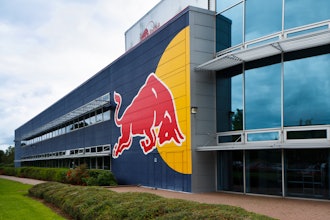The Cost of Unplanned Downtime
As the single largest source of productivity loss, plant downtime is often a critical challenge for manufacturers. Moreover, while many things can lead to downtime, unplanned equipment failures and breakdowns can be especially visible and costly. According to a GE Service Max research report conducted by Vanson Bourne in 2017, 82 percent of companies surveyed said they had experienced at least one unplanned downtime between 2014 to 2017. With outages lasting an average of four hours, the loss of productivity can translate to $2 million per incident — making asset downtime a billion-dollar problem for industrial companies.
Outages are so costly because of myriad of productivity and opportunity costs associated with unplanned downtime. In assembly line situations, for example, one asset outage will affect not only the production line but in worst case scenarios, the entire supply chain (i.e., parts ordering, warehousing, fulfillment, etc.). There are also significant opportunity costs associated with unplanned downtime - workers are under-utilized, lower output can impact product availability and sales, and the inability to meet customer demand can affect customer trust and potentially tarnish the company’s brand.
Finally, employees’ health and safety are at risk, not only when equipment fails or breaks, but also when exposed to dangerous situations. According to the National Safety Council, employee injuries cost more than $250 billion each year, including $182 billion in lost wages and productivity. Today, many companies are looking to advanced technologies to help improve production processes, improve the health and safety of their workforce, ensure regulatory compliance, and minimize the company's exposure to avoidable risks and penalties.
How Mobile Robots Equipped with IoT Technologies Can Help
When it comes to worker safety in the manufacturing industry, one of the most significant risk areas are inspections. There are many processes, assets, and systems that require both internal and external inspection to continue safe operations, and these must be scheduled regularly to comply with worker health and safety regulations. These inspections often involve assets that are in hazardous or difficult to access environments (i.e., confined spaces or assets located at great heights). Sending humans into these environments is a dangerous and potentially costly proposition because it can lead to injuries, fatalities, workers comp claims, lawsuits, and more.
Mobile robots equipped with Internet of Things (IoT) technologies that enable human operators to conduct inspections remotely is one very viable solution to this problem. IoT equipped mobile robots can also help companies avoid equipment outages through the collection of asset data, which is the first step toward proactive maintenance and culminates in pre-emptive, predictive maintenance processes.
IoT has been talked about for years now, and many organizations have finally begun to put IoT-driven operational strategies in place to help them measure, monitor and predict the health of their assets in real-time. Through the advent of IoT technology enablers — including smart sensors, digitized assets, cloud computing and advanced data science technologies such as artificial intelligence (AI) and machine learning (ML) — more and more companies are integrating data-centric processes into business strategies to help, amongst other things, minimize the costs of unplanned downtime.
In the industrial maintenance landscape, the ability to gather better asset and environmental data and then analyze and compare that data over time is what’s driving the shift from reactive maintenance to a predictive maintenance model. Predictive maintenance differs from time-based, preventative maintenance because it relies on the actual condition of the equipment, rather than average or expected life statistics, to predict when maintenance will be required. Some of the processes may be more automated than others, but ultimately, it’s about giving humans access to tools that help them make better business decisions.
By knowing which equipment needs maintenance, workers can better plan the necessary resources – spare parts, staff, etc.—and what would have been "unplanned stops" are transformed to shorter and fewer "planned stops," thus increasing plant availability and productivity. Industrial and manufacturing companies can also increase equipment lifetime and improve plant safety.
How to Implement IoT in an Industrial Setting
The first step toward a predictive maintenance model is the ability to collect data that can help enhance one’s ability to make informed decisions. Inspection crews are often called upon, before maintenance plans and resources can be determined, to conduct visual inspections of an asset to detect signs of damage or potential hazards.
Visual image capture and sensor-based data can significantly enhance the inspection team’s ability to assess the situation. In hard to reach spaces such as ducts, pipes, and tanks, the crew may even leverage borescope cameras to get a visual gauge of the environment. One challenge with such solutions, however, is that it can be difficult for inspectors to guide the cameras in spaces where they have limited access, visibility or maneuverability.
Human-operated robots are a practical option in helping gather critical IoT data, especially in hard-to-reach spaces or hazardous environments. By leveraging robotic inspection tools equipped with 4k cameras, long battery life and extended range, inspectors can perform first-look, remote visual and sensor-based inspections to gather critical data from assets in the factory or the field. Coupled with industrial IoT (IIoT) and cloud computing, companies can collect and analyze a plethora of data to make maintenance decisions that are contextual, versus time-based.
Industrial IoT-enabled Mobile Robots in Action: A Case Study
In a recent example, a leak detection alert was triggered at a company’s manufacturing facility, coming from the bottom of an underground tank used as a receptacle for chemicals in the aluminum anodizing process. The company faced several challenges: the tank's contents were unknown, and a manual inspection would put humans at risk; strict regulations for working in confined and hazardous areas required extra caution and vigilance, and a prior chemical overflow into the tank had shut down the facility.
By using an IoT enabled mobile robotics platform (in this case, Sarcos Robotics’ Guardian S), the company was able to remotely conduct a visual inspection and determine the cause without putting employees at risk. The capture of 4K video allowed inspectors to see tank conditions real-time, and then use the videos to serve as critical data points for post-mission, preventative maintenance analysis. Cost savings from the mission included the streamlining of inspection time (reduced by 30 labor hours), reduction in number of employees required to staff the inspection (two employees’ time versus four), and lower resource costs including employee safety training, inspection tools, and infrastructure.
Data-Driven Paradigm Shifts: From Reactive to Proactive Maintenance
IoT, AI, and machine learning are now all possible with smart connected machines that are collecting and delivering masses of high-resolution audio, video and sensor data to the cloud for computing and analysis at unprecedented volumes to predict what needs to be fixed before it needs fixing. A recent study by McKinsey states that predictive maintenance will save companies $630 billion by 2025.
For industrial manufacturing, existing maintenance practices can be labor intensive and inefficient. Many companies strive to minimize unplanned downtime, while also operating with the leanest staff, exhibiting limited labor waste and ensuring the fewest safety incidents. Industrial firms can significantly improve workforce performance, productivity and safety through smarter maintenance strategies that include modern automation technologies, from robotic sensor platforms to data analytics to cloud computing. The result is improved insight into process and equipment conditions, empowering managers to make better-informed business decisions in the field or on the plant floor, as well as creating safer work environments for our human workforce.
Kristi Martindale serves as Executive Vice President and Chief Marketing Officer for Sarcos Robotics. A 20-year veteran of the technology industry and a brand-builder, Martindale’s passion is developing performance-driven global marketing organizations, and she has created, developed and deployed successful industry-leading products and strategies for startups, mid-sized companies and Fortune 500 companies.






















